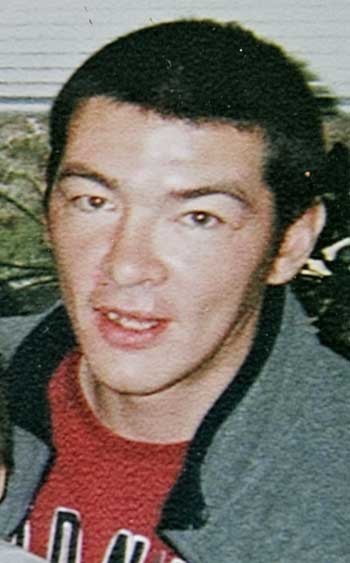The inquest into the death of Robert Stone failed to answer the one question it was supposed to: how did he die?
“That’s what the inquest is about,” said Simone Arnold, the Justice Manager for the Council of Yukon First Nations. “But we got down to day four and it’s the same exact thing we knew in 2010.”
Since birth, the story of Robert Stone has been tragic, said Arnold.
“He was never given a break,” she said.
Which was true up to his death.
Stone suffered from FASD and seizures.
Days before he was brought to the Whitehorse Correctional Centre for the last time, his wife died.
While he served those last six weeks in a cell, he was grieving, Arnold said.
When Stone was released on May 1, 2010, it was the first time he saw his friends since his wife’s funeral.
“He went on a bender,” said Arnold. “But he wasn’t just some drunk that climbed into detox for the 139th time.
“He was a human being that everyone seemed to like.”
Arnold points out the woman who stopped to see if Stone was OK on May 1.
She held his hand as she waited for the paramedics to respond to her 911 call and she was eight months pregnant at the time, said Arnold.
“She wasn’t scared of him,” she added. “She wasn’t horrified. That shows a lot about his human nature.”
But during the week-long coroner’s inquest into his death, no pictures of the 34-year-old father of two were shown.
No videos.
No experts, apart from a toxicologist and the pathologist who did the autopsy on Stone’s body in Vancouver, were called to the stand.
“If someone told you you had cancer, wouldn’t you go to another doctor and say, ‘Do I have cancer?’” said Arnold. “I am not saying it was a matter of what his race was or anything, but if it was somebody really, really important, wouldn’t they have, like, three or four doctors?
“But those experts don’t come cheap.”
Over the course of the week, 22 witnesses took the inquest’s stand.
They were made up by staff from the detox centre who were the last to see Stone alive, paramedics who responded to the 911 call and the RCMP members who took him into custody after that. There was the emergency room doctor who sent him over to detox and staff at the Whitehorse Correctional Facility who released him from jail a day before he was found dead. All of these witnesses testified that they knew Stone fairly well. And all testified he was a pleasant individual.
“They brought a storyline to what actually occurred on May first and second but, you know, Robert was 34, he wasn’t born on May 1,” said Arnold.
It would have been beneficial to hear about Stone’s medical history, said Arnold.
The jury requested Stone’s family doctor take the stand.
That request was denied.
“We did make inquires but, in the end, the one doctor that might have been able to speak was not available, he wasn’t even in Whitehorse,” said Chief Corner Sharon Hanley.
But the coroner can break the inquest if a witness is not immediately available, Arnold added.
“We felt that the relevant medical information was presented,” said Hanley.
In the end, the jury decided Stone died of undetermined natural causes.
It was a result no different from the autopsy in 2010 that said there was not enough evidence to identify a clear cause of death, while, at the same time, there was not enough evidence to dispel theories, such as that a possible seizure prevented Stone from turning his head away from the pillow he was sleeping on, facedown.
“In many deaths, not all the questions can be answered,” said Hanley. “We did our best to answer everything that we could.”
For Arnold, the only solace she can take from Stone’s inquest is the extra support the jury’s recommendations give to long-made arguments in the territory.
Specifically, its demand for a downtown, sober, assisted-living facility and more resources for FASSY.
“We have the police review recommendations - there’s 33 recommendations in there - we have the acutely intoxicated persons at risk report,” said Arnold. “And then we have the Silverfox recommendations and it all pertains to people who suffer from FASD, some type of mental disorder, homelessness. We’ve consulted everything. We’ve said this is the area. We’ve consulted with experts. This is a dire need.”
“How many more people have to die before we start seeing more action and less talk?” said Chantal Genier, an aboriginal criminal courtworker for the Council of Yukon First Nations Justice programs.
There needs to be more awareness about FASD in the criminal justice system - from the cops who arrest people with the disorder to the courts that prosecute them, she said.
“I don’t think there’s anybody in Whitehorse who can diagnose it,” she said. “FASSY has to bring specialists in.”
“He was a father of two kids,” said Arnold of Stone. “And those two kids, 10 years from now, are going to be teenagers. And they’re going to be known as the orphan kids whose dad died in detox and whose mom died of heart failure.
“Let’s do something important for these kids. First Nations like to honour the dead through potlatches and ceremonies and spirit houses. But I think we have the opportunity to leave a bigger legacy for Robert Stone - his plight and his story. And his children.”
Contact Roxanne Stasyszyn at
roxannes@yukon-news.com
